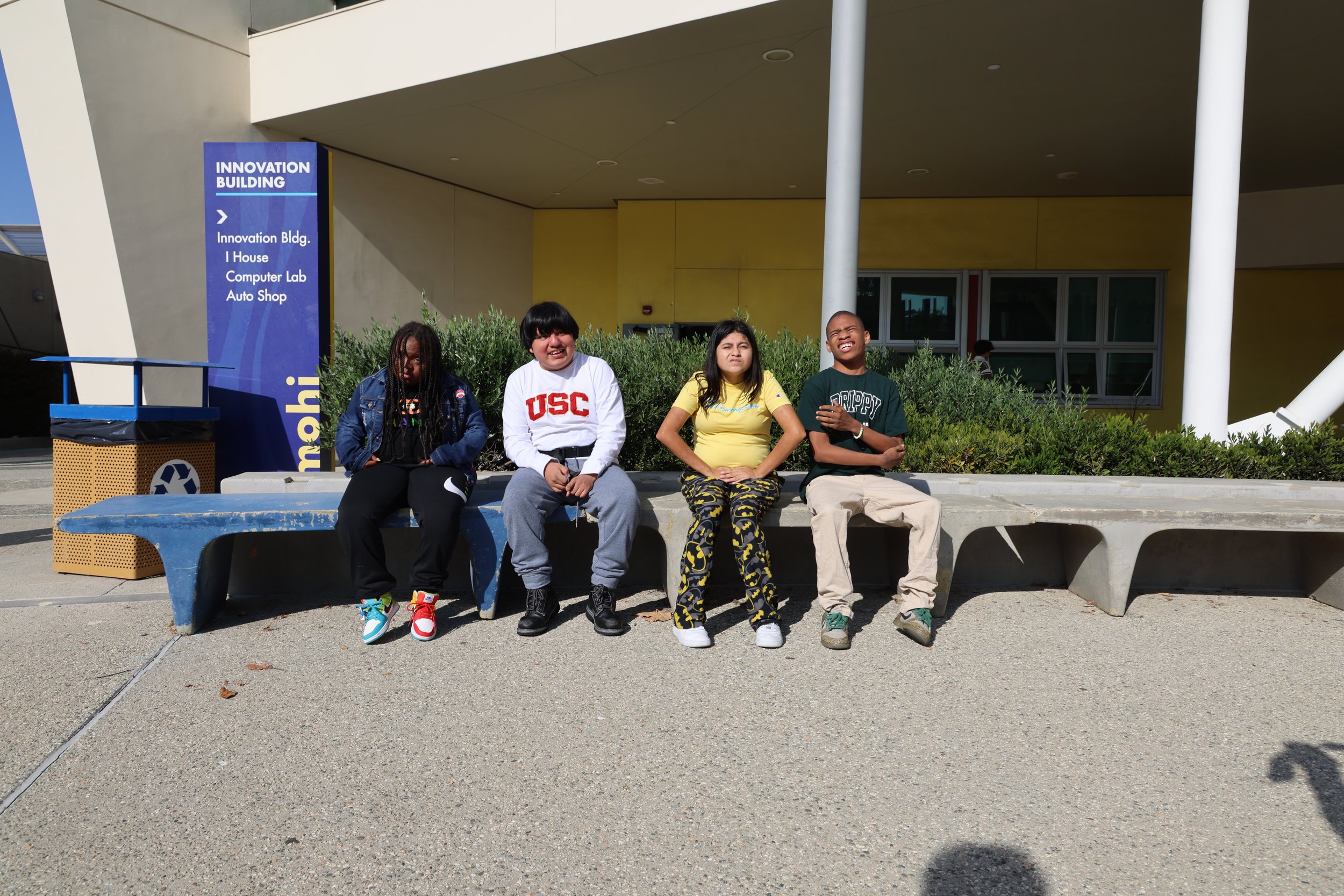Disproportionality discovered in SMMUSD special education
Taylor Witt / The Samohi
Niya Harris (`26), Fernando Hernandez (`26), Katy Canas-Cruz (`25) and Koryon Mason (`25) are four of seven students in Ms. Krutzler’s special eduction class at Samo.
SMMUSD is working to adopt a plan that addresses the growing problem of disproportionality in special education overidentification. For the most part, Latinx and Hispanic students have been unfairly highlighted in the past as having learning disabilities. Teachers at Samo are also negotiating collaborative classes to ensure a healthier environment within the high school walls. But what do disproportionality, overidentification, and collaborative classes mean?
Disproportionality is “the overrepresentation of a specific race or ethnicity”. It applies to this case because disproportionality can represent a specific race or ethnicity in a specific disability, discipline, or placement category. According to a Santa Monica Daily Press report, the California Department of Education has determined that the school district was significantly disproportionate toward identifying Latinx and Hispanic students, which progressed from the 2019-20 school year to the 2021-22 school year. This is the main cause of the investigation into SMMUSD, and Executive Director of Elementary Schools Dr. Steve Richardson says the district is working to curtail these problems.
“As we look to strengthen our program and build coherence around that, we’re not only supporting our Hispanic subgroup, we’re supporting all kids,” Richardson told the Santa Monica Daily Press. “By doing that, we’re also going to relieve some of the tensions put on special [education] when we’re overidentifying kids. It stretches them very thin when we have a risk ratio factor that’s high for any subgroup.”
Another big part of special education within SMMUSD is collaborative classes. Collaborative classes are classes with a combined roster of general education students and special education students. They also aim to foster a positive and healthy environment between both parts of the student body at Samo. However, collaborative classes are being negotiated among teachers to make sure the classes meet state law requirements for special education. Teachers at Samo have been working with the district to ensure the goals for these classes remain the same, including English teacher Lily Sheahan, who teaches English 10 as a collaborative class.
“Teaching a collaborative class gives students with learning difficulties an opportunity to learn curriculum at the standard for California education,” Sheahan said. “It’s not limiting and it promotes high expectations for all students. I also think it’s important for students with disabilities to be invited to learn at the same pace, with the same rubric and opportunity for academic success as all other students.”
The investigation also found that Latinx and Hispanic students were three times more likely to be identified in disability categories than students of other races or ethnicities. While this wasn’t the case for the 2022-23 school year, it was a different story from 2019 to 2022. These problems were first brought up in an SMMUSD board meeting on Nov. 16, when the plan mentioned above to address this issue was adopted. The budget for the plan is approximately $346,000 and the money will be used on teacher training, office hours for teachers, intervention training, and the cost of instructional materials, which are all extremely important things to SMMUSD board member Laurie Lieberman.
“It’s clear that what the plan is doing is really important, and while it’s almost a pilot program, it really has much broader significance,” Lieberman told the Santa Monica Daily Press. “I love that it’s being done this way because I think you’ll work out the kinks, see what works and what doesn’t work.”
thesamohinews@gmail.com
